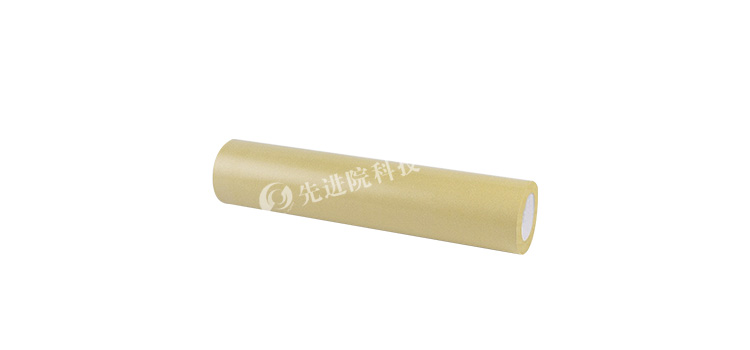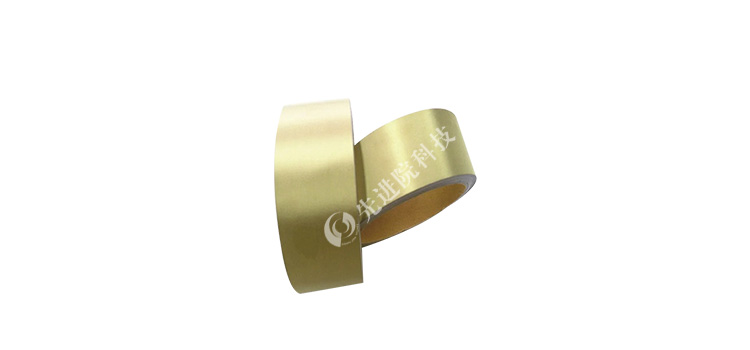

Hotline:0755-22277778
Tel:0755-22277778
Mobile:13826586185(Mr.Duan)
Fax:0755-22277776
E-mail:duanlian@xianjinyuan.cn
In the field of electronic materials,Gold plated conductive clothIt has attracted a lot of attention due to its excellent conductivity and wide application prospects. As one of the leading enterprises in this field, Advanced Institute (Shenzhen) Technology Co., Ltd. has been committed to the research and innovation of electromagnetic shielding and thermal conductive materials such as gold-plated conductive cloth. This article will delve into the factors that affect the conductivity of gold-plated conductive fabrics, and analyze them by comparing relevant data.
The substrate of gold-plated conductive cloth is one of the fundamental factors affecting its conductivity. Common substrates include polyester fibers, etc. Different substrates have varying electrical conductivity, which can affect the overall conductivity of gold-plated conductive fabrics. For example, using ordinary polyester fibers as the substrateGold plated conductive clothIts surface resistivity may be around 10 ΩΩ/sq; If modified polyester fibers that have undergone special treatment or have higher conductivity are used as the substrate, the surface resistivity may be reduced to below 10 ΩΩ/sq, thereby improving the conductivity of the gold-plated conductive cloth.
The thickness and quality of the gold coating are key factors determining the conductivity of gold-plated conductive fabrics. Generally speaking, the thicker the gold coating, the better the conductivity. Research data from Advanced Institute of Technology shows that when the thickness of the gold coating increases from 0.01 μ m to 0.05 μ m, the conductivity of the gold-plated conductive cloth can be increased by about 30%. However, the quality of gold plating depends not only on thickness, but also on the uniformity, density, and other properties of the plating. If the coating is uneven or there are pores, it will increase the resistance to electron transfer and reduce the conductivity. Through electron microscopy observation, it was found that high-quality gold plating has a smooth and dense surface, without obvious pores or defects, which can effectively ensure the smooth transmission of electrons and keep the resistance value of the conductive cloth at a low level, such as surface resistance as low as 0.1 Ω/sq or below.
The process parameters such as current density, temperature, and time during electroplating have a significant impact on the conductivity of gold-plated conductive fabrics. Taking current density as an example, when the current density is within the range of 1-3 A/dm ², as the current density increases, the deposition rate of gold accelerates, the coating thickness increases, and the conductivity improves. But when the current density is too high, such as exceeding 5 A/dm ², it may lead to rough crystallization of the coating, an increase in porosity, and a decrease in conductivity. Experimental data from Advanced Institute (Shenzhen) Technology Co., Ltd. shows that the conductivity of gold-plated conductive cloth electroplated at the optimal current density of 3 A/dm ² is about 20% higher than that of samples electroplated at high or low current densities.
The pre-treatment process of the substrate cannot be ignored. Thoroughly cleaning and activating the substrate before gold plating can improve the adhesion between the gold coating and the substrate, thereby enhancing the conductivity. If the pre-treatment is not sufficient, there may be impurities such as oil stains and oxides on the surface of the substrate, which will hinder the deposition of gold ions and the conduction of electrons. For example, those that have undergone professional pre-treatment processesGold plated conductive clothCompared with untreated ones, the contact resistance can be reduced by about 50%, thereby improving the overall conductivity.
Temperature has a certain impact on the conductivity of gold-plated conductive cloth. Within a certain temperature range, as the temperature increases, the thermal motion of electrons intensifies and the resistance slightly increases. Experiments have shown that when the ambient temperature rises from 25 ℃ to 80 ℃, the resistance value of gold-plated conductive cloth may increase by about 10% -15%. However, in practical applications, the impact of general temperature changes on its conductivity is usually within an acceptable range.
Humidity is also an important environmental factor. In high humidity environments, the surface of gold-plated conductive cloth may adsorb moisture, forming a water film that increases the path resistance of electron transmission, thereby reducing its conductivity. Research has found that in an environment with a relative humidity of 90%, the conductivity of gold-plated conductive cloth may decrease by about 20% -30% compared to a dry environment (relative humidity of 30%).
In practical use,Gold plated conductive clothMay be subjected to certain mechanical stresses, such as tension, bending, friction, etc. Excessive mechanical stress may cause cracks, peeling, and other phenomena in the gold coating, damaging the conductive path and reducing the conductivity performance. For example, after 1000 bending tests, the resistance value of partially gold-plated conductive cloth may increase by about 30% -50%, seriously affecting its conductivity.
Long term storage and the quality of the storage environment can also affect the conductivity of gold-plated conductive cloth. If the storage environment is harsh, such as the presence of strong oxidizing gases, corrosive substances, etc., it may cause oxidation or corrosion of the gold coating, thereby reducing its conductivity. Generally speaking, after being stored in a normal environment for one year, the conductivity of gold-plated conductive cloth may decrease by about 5% -10%.
In summary, the conductivity of gold-plated conductive cloth is influenced by various factors such as the thickness and quality of the substrate and gold coating, manufacturing process, environmental factors, and usage and storage conditions. Understanding these factors and controlling them during production, use, and storage is of great significance for fully utilizing the excellent conductivity of gold-plated conductive fabrics.Advanced Institute (Shenzhen) Technology Co., LtdThrough continuous research and innovation, significant achievements have been made in optimizing these influencing factors, providing strong technical support for the widespread application of gold-plated conductive fabrics in electronics, communication, aerospace and other fields.
The above data is for reference only, and specific performance may vary due to production processes and product specifications.

Advanced Institute (Shenzhen) Technology Co., Ltd, © two thousand and twenty-onewww.avanzado.cn. All rights reservedGuangdong ICP No. 2021051947-1 © two thousand and twenty-onewww.xianjinyuan.cn. All rights reservedGuangdong ICP No. 2021051947-2